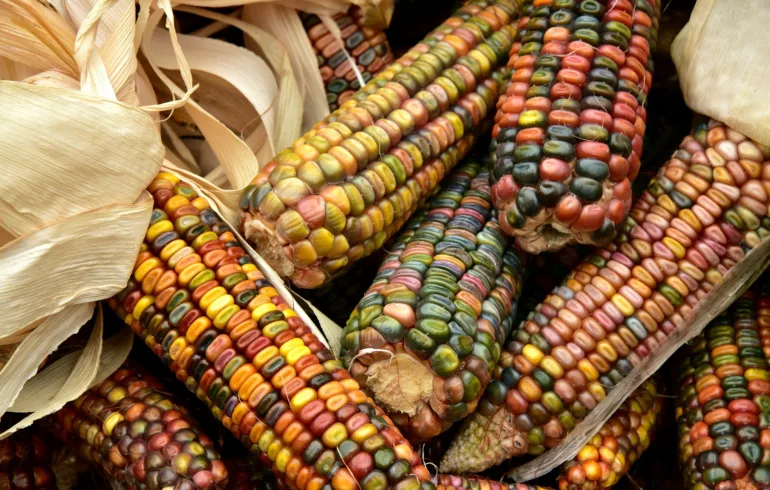TL;DR:
- The global Artificial Intelligence in Agriculture Market is expected to reach $4.9 billion by 2028, growing at a CAGR of 24.1% during the forecast period.
- AI is being used in the agriculture industry to maximize crop production efficiency through applications like precision farming, drone analytics, agriculture robots, livestock monitoring, and labor management.
- The demand for AI in agriculture is driven by factors such as the world’s rapidly growing population, the need for a green revolution, the scarcity of arable land, and the need for greater food production for food security.
- AI-based tools and methods assist with various aspects of the agriculture sector, such as predictive and recommendation analytics, plant disease detection, pest infestation detection, and soil monitoring.
- The COVID-19 pandemic has led to a greater uptake of remote sensing and farm management software technologies in agriculture, resulting in a surge in the adoption of AI technologies.
- The market is driven by factors such as the growing acceptance of IoT and the increasing use of robotics in agriculture but is challenged by the lack of technical knowledge among farmers.
- The market is segmented by technology (machine learning, computer vision, predictive analytics), offering (hardware, software, AI-as-a-service, services), and application (precision farming, agriculture robots, livestock monitoring, drone analytics, labor management, others).
- North America leads the market in terms of revenue, with key players including Deere & Company, IBM Corporation, Microsoft Corporation, Climate LLC (Bayer AG), and others.
- The growth of AI in agriculture is expected to continue as businesses adopt these technologies for their numerous benefits and efficiency-enhancing capabilities.
Main AI News:
Artificial intelligence has made its way into the agriculture industry, providing solutions for businesses to maximize their crop production efficiency. Precision farming, drone analytics, agriculture robots, livestock monitoring, and labor management are only a few of the applications that AI offers. With the aid of deep learning technology, agricultural firms are boosting their crop productivity, resulting in higher yields and higher efficiency.
The global demand for AI in agriculture is driven by the world’s rapidly growing population and the need for a green revolution powered by artificial intelligence, the Internet of Things (IoT), and big data. The scarcity of arable land and the need for greater food production for food security are also driving factors behind the demand for AI in agriculture.
AI-based tools and methods assist with various aspects of the agriculture sector, such as predictive and recommendation analytics, plant disease detection, pest infestation detection, and soil monitoring. Automation in agriculture also helps allocate resources like water and fertilizer, choose the best time to plant crops, and identify weeds, further increasing the demand for AI technologies. Several tech companies and startups are developing IoT-enabled devices to implement AI applications for agriculture on a larger scale due to the numerous benefits that these applications offer.
The COVID-19 pandemic has also had an impact on the market, leading to a greater uptake of remote sensing and farm management software technologies. The pandemic has made people more conscious of the quality of food they consume, making it even more crucial to monitor the health of yields. As a result, the adoption of AI technologies in agriculture has surged, providing a profit to the market.
There are several factors driving the growth of the market, including the growing acceptance of IoT and the increasing use of robotics in agriculture. The demand for IoT in agriculture is rising due to the growing usage of mobile devices and cloud computing, as well as the numerous advantages offered by IoT. However, the market is facing challenges due to the lack of technical knowledge among farmers, who often lack the understanding and deployment of precision farming principles.
Artificial intelligence in the agriculture market is segmented into machine learning, computer vision, and predictive analytics based on technology. Based on offering, the market is classified into hardware, software, AI-as-a-service, and services. By application, the market is bifurcated into precision farming, agriculture robots, livestock monitoring, drone analytics, labor management, and others. Regionally, the market is analyzed across North America, Europe, Asia Pacific, and LAMEA, with North America leading the market in terms of revenue.
Key players in the market include Deere & Company, IBM Corporation, Microsoft Corporation, Climate LLC (Bayer AG), Farmers Edge Inc, AgEagle Aerial Systems, Inc., Prospera Technologies, Inc. (Valmont Industries, Inc.), AAA Taranis Visual Ltd., CropIn Technology Solutions Private Limited, and Corteva, Inc. (Dow AgroSciences LLC).
The growth of AI in agriculture is expected to continue as businesses adopt these technologies for their numerous benefits and efficiency-enhancing capabilities. With the world’s population continuing to grow and the need for food security becoming more pressing, artificial intelligence in the agriculture market is poised for significant growth in the coming years.
Conlcusion:
The growth of Artificial Intelligence in the Agriculture Market is expected to reach $4.9 billion by 2028, with a CAGR of 24.1%. The demand for AI in agriculture is driven by factors such as the world’s rapidly growing population, the need for a green revolution, the scarcity of arable land, and the need for greater food production for food security.
The COVID-19 pandemic has led to a greater uptake of remote sensing and farm management software technologies in agriculture, resulting in a surge in the adoption of AI technologies. The market is driven by factors such as the growing acceptance of IoT and the increasing use of robotics in agriculture but is challenged by the lack of technical knowledge among farmers.
North America leads the market in terms of revenue, with key players including Deere & Company, IBM Corporation, Microsoft Corporation, and others. The growth of AI in agriculture is expected to continue as businesses adopt these technologies for their numerous benefits and efficiency-enhancing capabilities, making artificial intelligence in the agriculture market poised for significant growth in the coming years.

